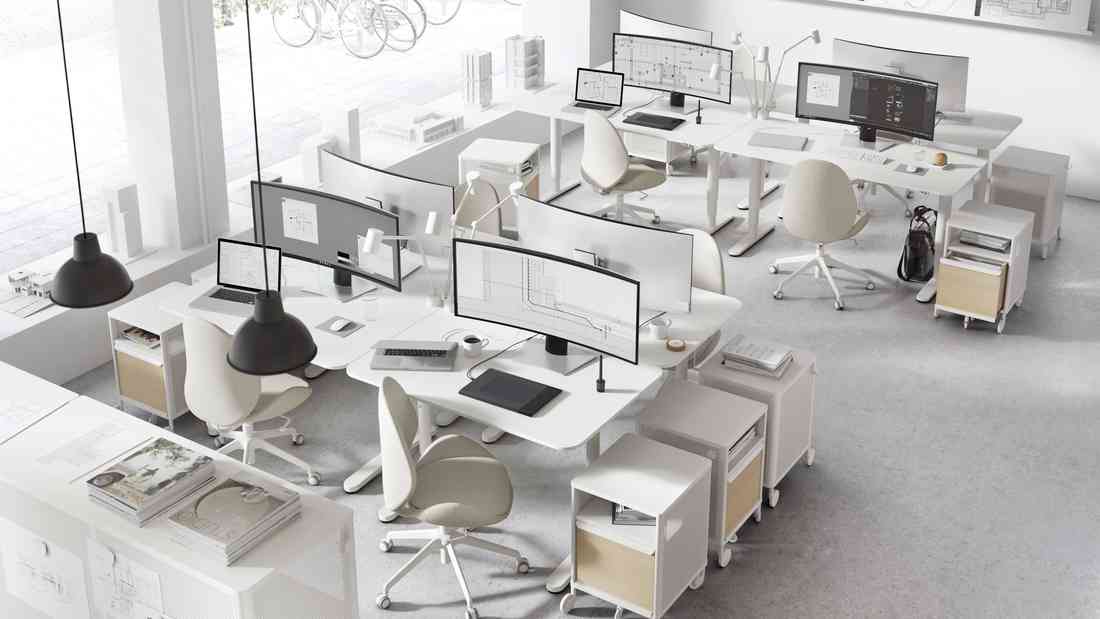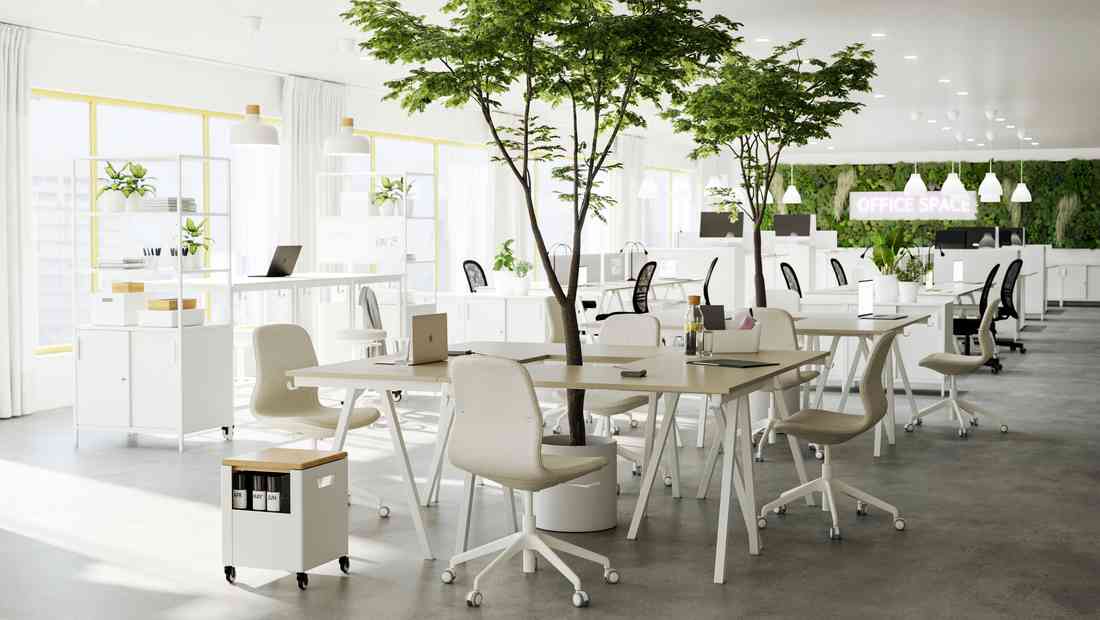Collaborative workspace is essential for fostering communication and teamwork among teams. Provide a dedicated area for meetings or group discussions equipped with a large table and comfortable chairs. This collaborative workspace can be used for brainstorming, team meetings, or simply discussing projects.
Use furniture that is easy to move so that this area can be adjusted as needed. Whiteboards or flip charts can also be useful additions for recording ideas during discussions. By providing collaborative workspace, you can encourage creativity and innovation in the workplace.
Creating a flexible workspace
A flexible workspace allows you to rearrange the layout as needed. Use furniture that is easy to move and adjust according to the available space. If you have enough space, add some folding chairs or extra floor cushions.
The ability to adjust the workspace with flexibility will help you accommodate more equipment and create a more comfortable atmosphere. With adjustable layouts, you can optimize the available space and ensure that all work equipment remains accessible and easy to reach.
Providing hidden storage
Hidden storage is an effective way to keep the workspace tidy without sacrificing a lot of space. Use desks with hidden drawers or shelves to store documents and work supplies. Drawers under the desk or shelves behind the door can also be practical storage solutions.
You can also use storage boxes or organizers that can be placed under the desk or on shelves. Choose storage boxes with attractive designs so they can also function as decorations. By providing hidden storage, you can keep your workspace clean and organized without sacrificing aesthetics.
By implementing the above tips, you can maximize office space with efficient and functional workspace design. A well-designed workspace will help improve concentration and productivity, as well as make employees feel more comfortable and motivated at work. For more effective workspace design planning, consult IKEA
Interior design services for style and layout recommendations. Experience various benefits and extraordinary experiences.


